double-channelled light projection mapping installation on a tree trunk slice

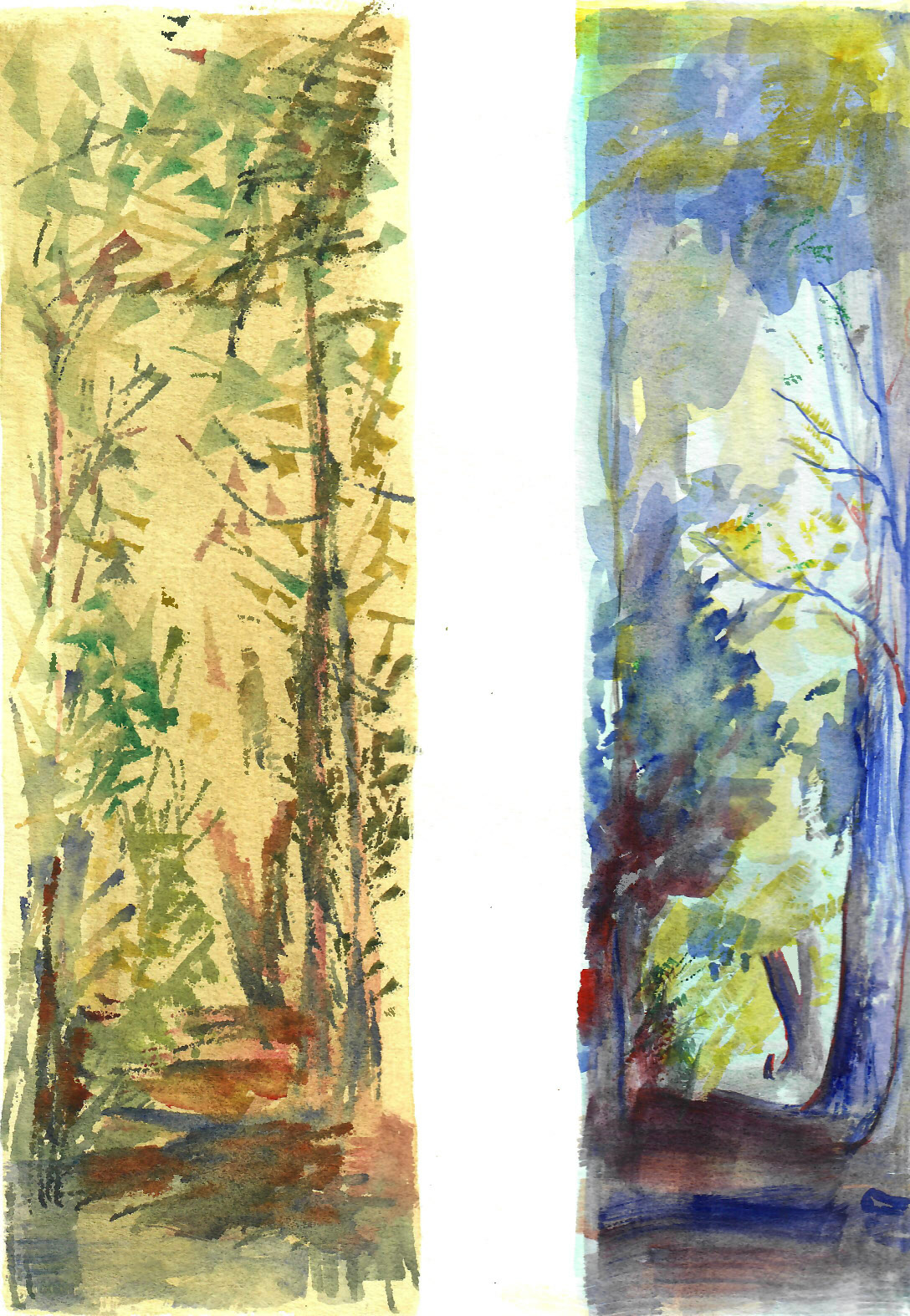




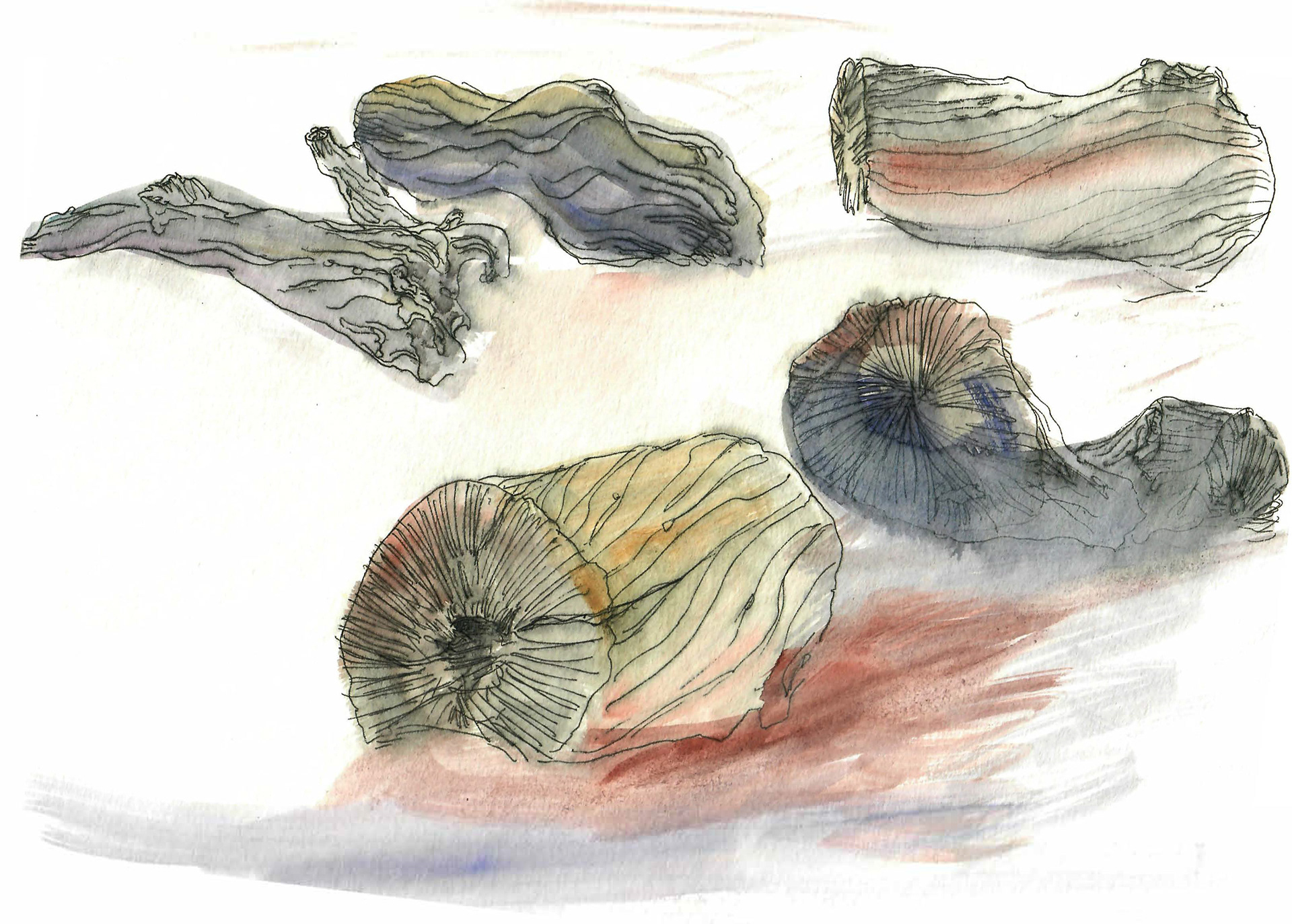
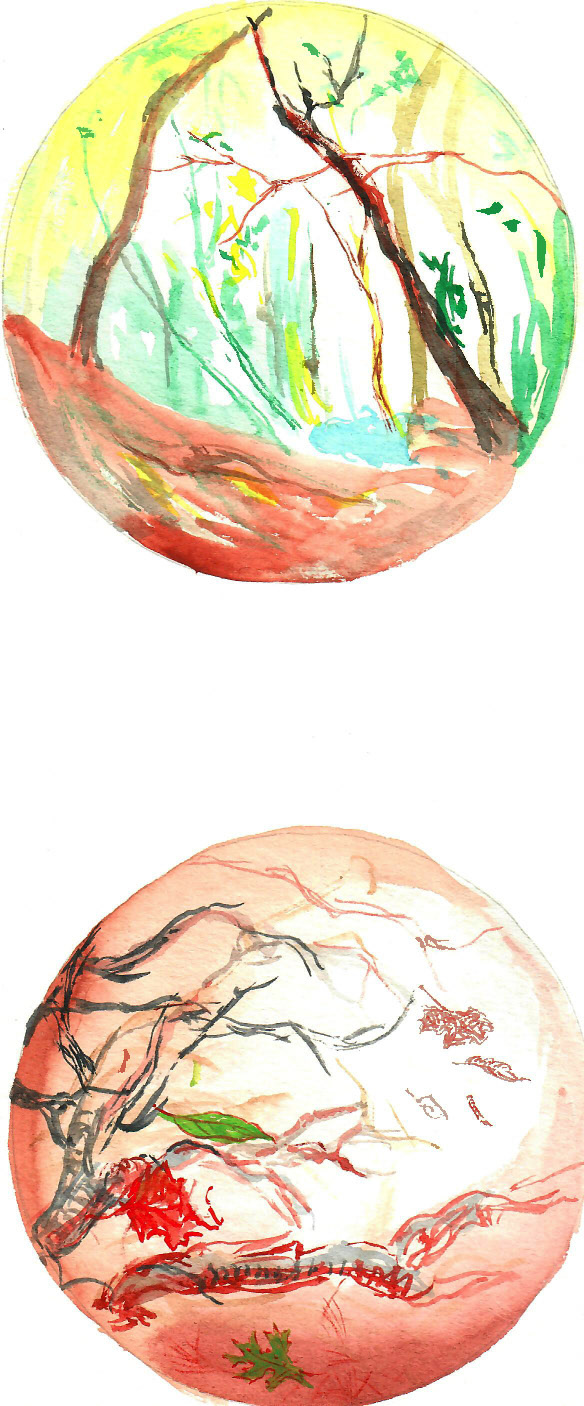
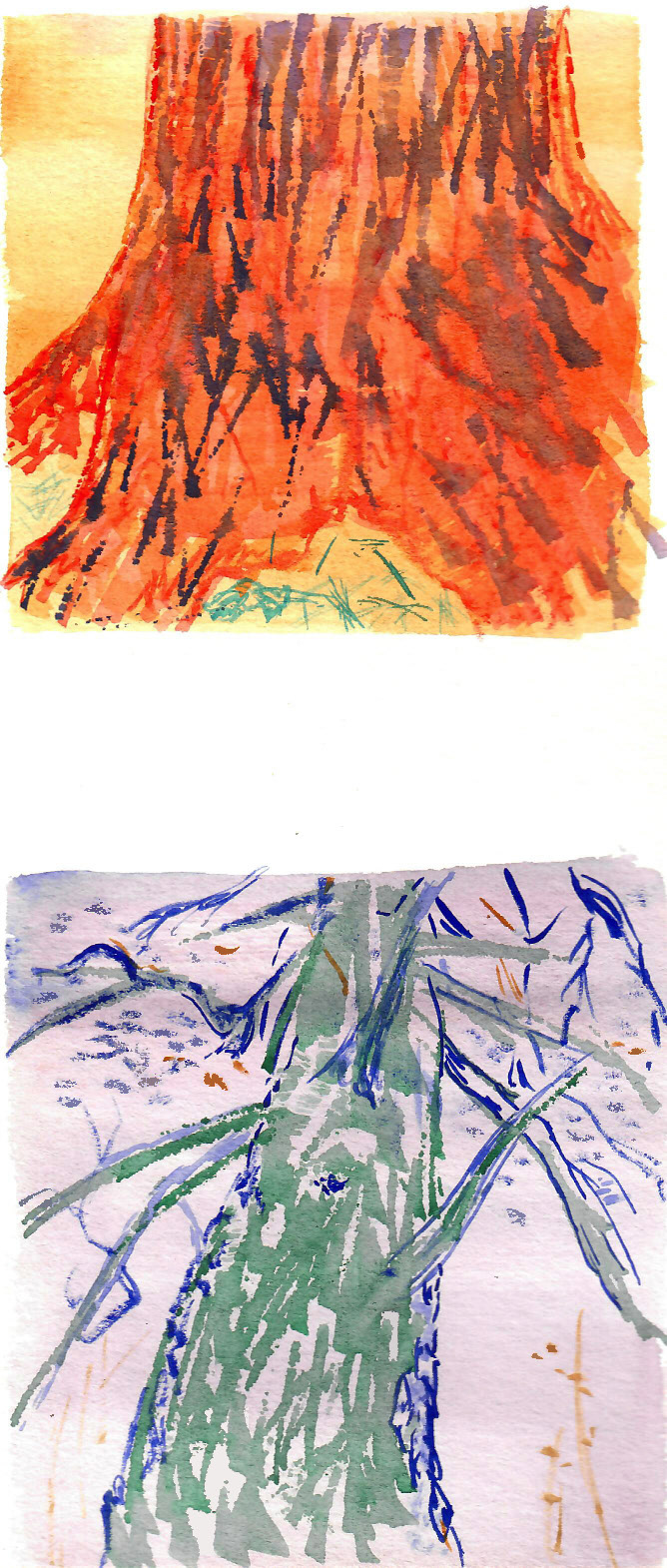
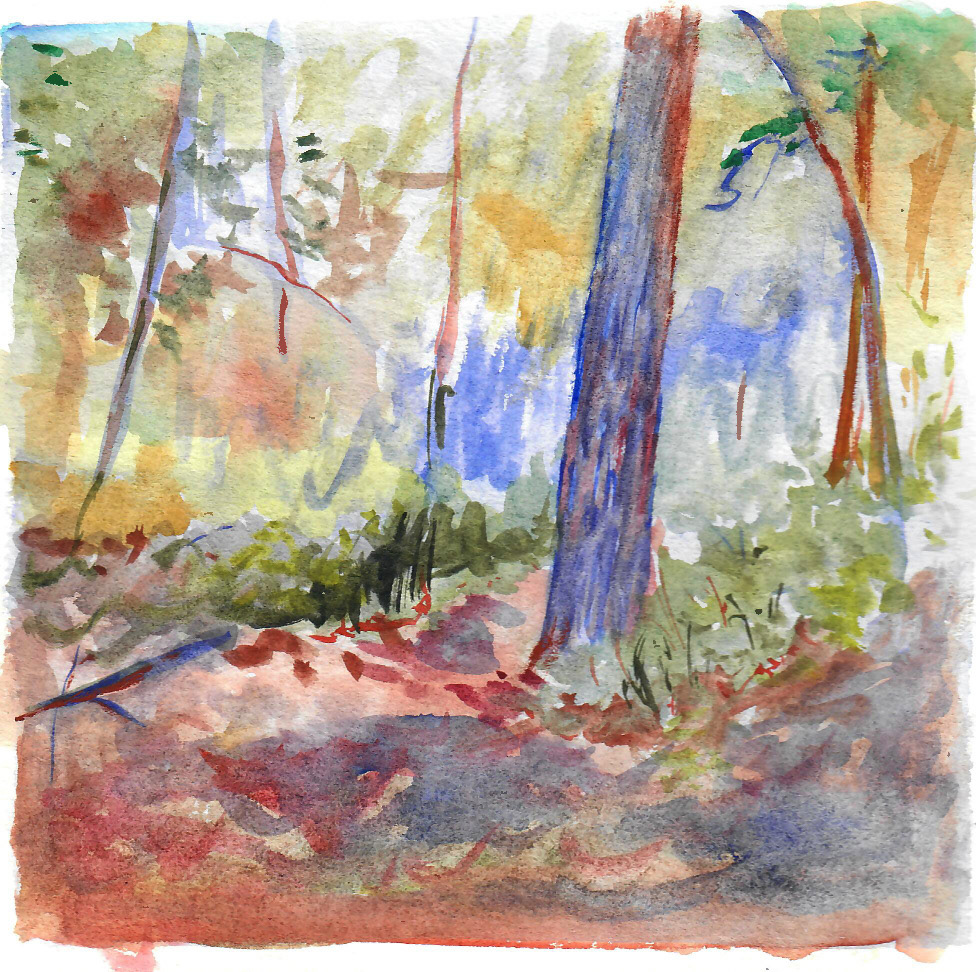
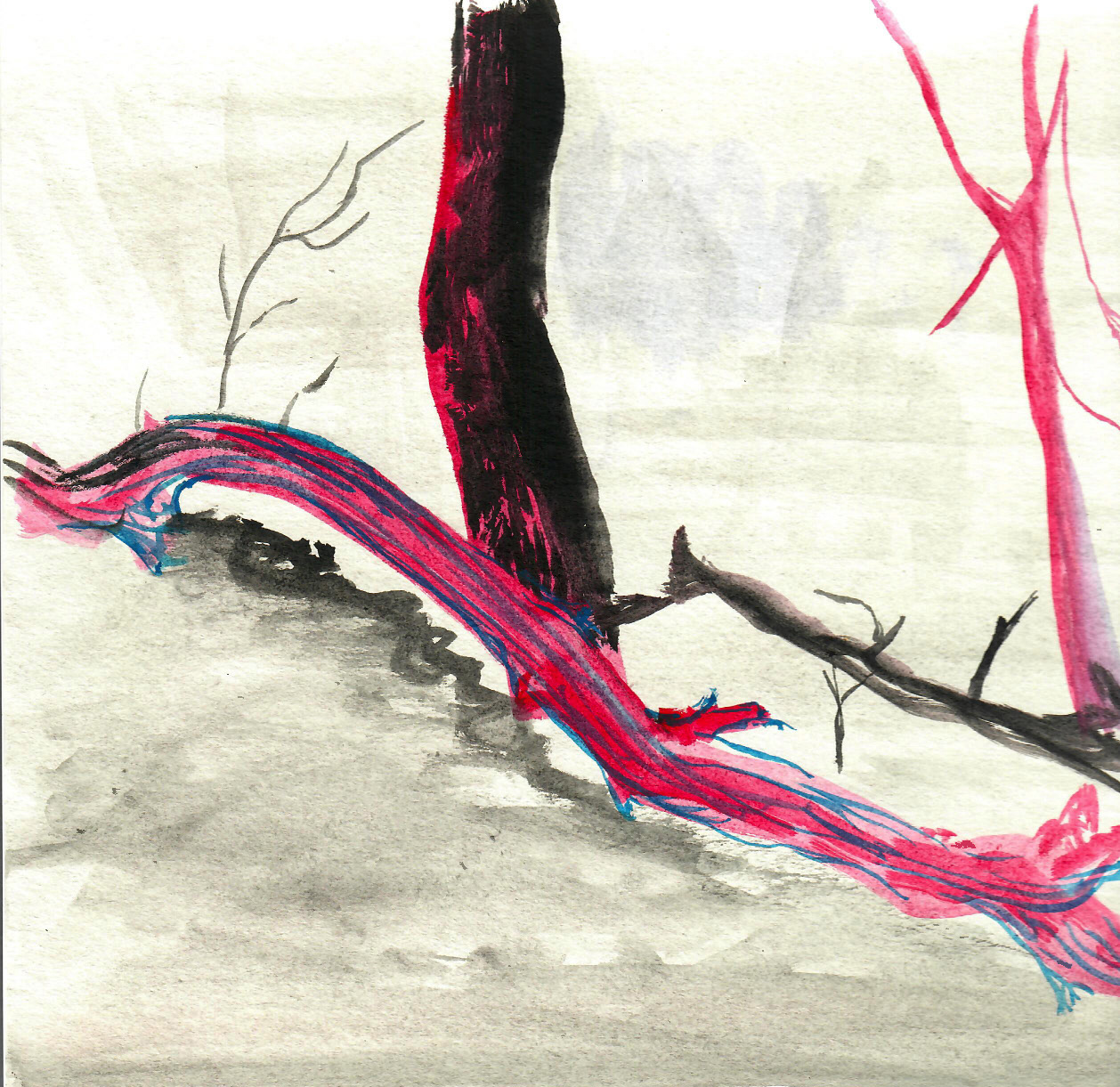

In September 2019, I explored Toronto High Park's Western ravines several times, and during those hikes, I experimented with watercolour painting for the landscape I observed there. As a result, a series of watercoloured studies of trees were produced. I was especially intrigued by those seemingly random and chaotic growing foliages - the apparent randomness cannot conceal the actual orderliness that nature has always represented. Accompanied by different appearances, heights, colours, flavours and even gestures in the winds, all those different species of greeneries are competing with each other ruthlessly, with a common goal towards one direction, up to the sky, where their energy is sourced. While at the same time, they rely on each other in this most inseparable manner so that they can survive. The situation is an identical reflection of our human society, and such thoughts fascinated me, so I decided to further experiment with different forms of visual arts to discuss the underlying rhythm proceeding among natural sceneries.
The final work presented is a double-channelled light projection mapping installation, which took place on a giant tree trunk slice:
One of the video channels serves the role of displaying background animation that was created from a few footage I shot onsite blended with watercolour paintings echoing the exact geological location.
Above this background animation, the other video channel exhibits the leading role - 5 groups of digital 3D modelled Platonic Solids dancing to the rhythm of music consecutively, in which each of these five Solid shapes reminisces one of my watercoloured trees painting. Vegetations settle in the soil moisturized with water, reach up to the air, and are supported by their own wooden trunks, so the compositions of these elements guided me to visualize the idea of "Platonic Solid," in which each of the five regular symmetrical 3-dimensional shapes represented one of the Five Elements.
If you are interested in learning more about the mathematical idea of Platonic Solids, here is a quoted brief info from StoryOfMathematics.com
Plato the mathematician is perhaps best known for his identification of 5 regular symmetrical 3-dimensional shapes, which he maintained were the basis for the whole universe, and which have become known as the Platonic Solids: the tetrahedron (constructed of 4 regular triangles, and which for Plato represented fire), the octahedron (composed of 8 triangles, representing air), the icosahedron (composed of 20 triangles, and representing water), the cube (composed of 6 squares, and representing earth), and the dodecahedron (made up of 12 pentagons, which Plato obscurely described as "the god used for arranging the constellations on the whole heaven"). https://www.storyofmathematics.com/greek_plato.html
